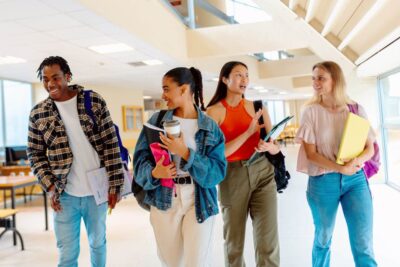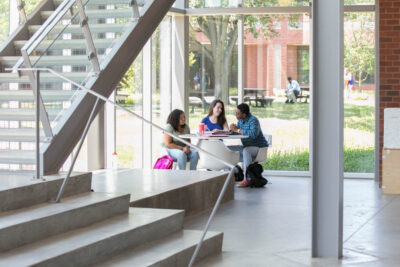Forging a stronger future for higher ed: 4 takeaways from APLU
What happens when you bring nearly 1,500 senior public university leaders together less than a week after a momentous election, amid what’s been called a crisis of confidence in higher education, to talk about “our public purpose”?
I had the privilege of attending the 2024 Association of Public & Land-Grant Universities Annual Meeting last month to find out. The answer is a rehashing of disheartening stats, angst about a highly unpredictable but often worrying future, and concern if we’re reaching students across a divided country. But that’s not the full story – the answer is also learning about model partnerships developing future professionals to fuel a region’s growth, research supporting mental health in tribal communities, and investments in raising at-risk students’ graduation rates.
Beyond the affirmation that this is hard work worth doing, I took four observations home with me from my three days with our public and land-grant university leaders.
1. Higher education leaders, and their supporting organizations such as EAB and others, are right to prioritize reclaiming the public good mantle.
Throughout the conference, attendees noted the shared themes across this gathering and others this fall. APLU chose “public purpose” as this year’s organizing principle. Meanwhile, AASCU recently held their conference focused on “Building Bridges: Uplifting Communities Through Collaboration.” And EAB is welcoming university leaders to sessions across the fall and winter on “The Modern Anchor Institution”. This convergence of themes responds to the increasingly evident need for universities to be communities’ engines for economic mobility and regional growth. While some may have once described this work as nice-to-have, it has become essential to success in an industry under pressure.
2. We need to tell our story better, but we also need a better story to tell.
The challenge ahead is twofold and it’s tempting to focus on the communications piece. It is undeniable our colleges and universities offer benefits to both individuals and their larger communities, which can lead us to frame public perception as a marketing problem. My colleagues have surfaced a variety of tactics to mitigate this problem, and I had the opportunity to see strong examples of public information campaigns among the APLU presenters. But no one in higher education would tell you they’d be satisfied if we were to stagnate where we are today.
We want to bring more students into our institutions. We want to get more of them through to completed degrees and off to good jobs. We want our research to improve the world and especially our own communities. We want to be better catalysts for regional improvement. This is where we at EAB have focused our work to ensure we’re helping our partners change experiences and not just the narrative.
3. The improvements to our story are going to come from big shifts but also re-committing to doing the small things right.
Higher education is facing big challenges and needs big solutions. We’re working with our partners on P20 pathways and anchor networks, the kinds of major collaborations that move institutions beyond delivering postsecondary education. But the APLU sessions were a valuable reminder that smaller initiatives matter too.
The embedded professional development conversations we’ve admired and recommended for a decade were once again featured as a way to improve students’ career readiness; students across 150 campuses continue to benefit from the Iowa GROW model. While we’re working together to implement the big initiatives, we can’t neglect the impact today from re-committing to the practices we know have measurable benefits for students, and sometimes only at the cost of well-trained and engaged student supervisors.
4. Changing that narrative will take the entire higher education ecosystem working together; this collaboration includes units that haven’t been prioritized in this conversation to date as well as going beyond the university walls.
The major collaborations I alluded to above achieve impacts greater than a single institution could on its own. Attending APLU also got me thinking about the people within our institutions we aren’t partnering with enough to achieve these big goals. A panel featuring the executive director of the Alan Alda Center for Communicating Science reminded us that even without a center for communication on campus, theater department faculty are an untapped resource for improving how we connect with different audiences. My own work at EAB has largely served our professional, continuing, and online education leaders… very few of whom I saw at APLU. As your institutions evolve to serve students and communities better it will require bringing what may have once been the periphery of the institution closer to the core.

More Blogs

The real demographic crisis isn't national—it's regional

Beyond the echo chamber
